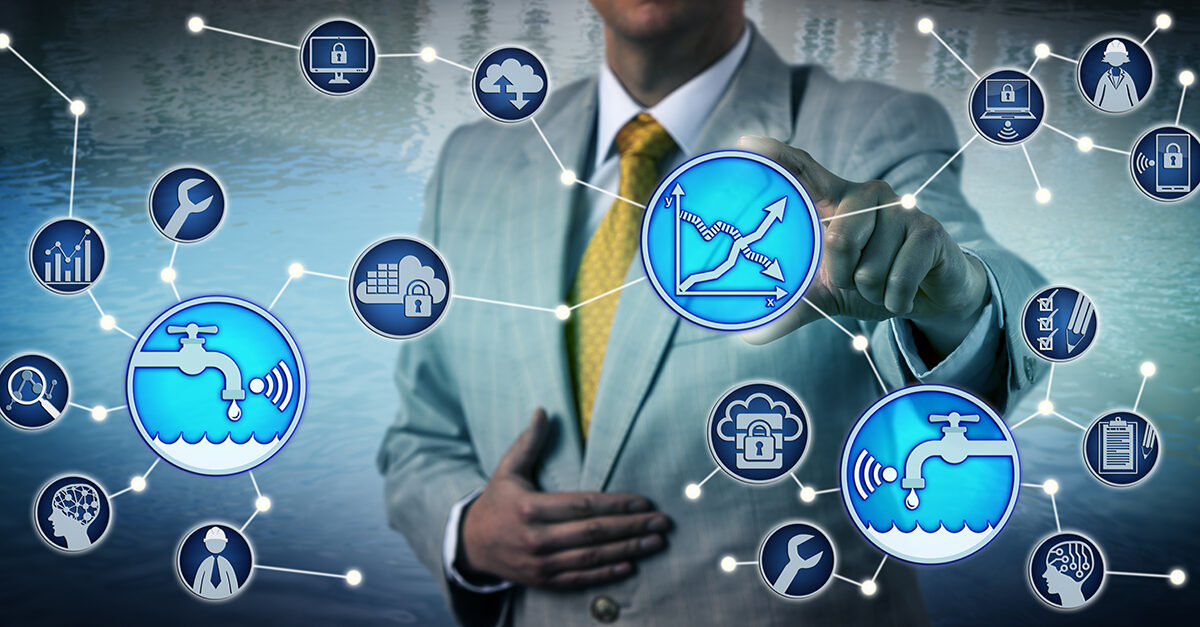Each day brings another story about the impact of climate change on our world. Today, we’re seeing the impacts of water scarcity play out across industries, reflecting a water crisis that will not be going away anytime soon. The World Resources Institute predicts a global freshwater deficit of 56% by 2030, which means that these types of water stress events will proliferate over time if nothing changes. Despite the growing concern over the water crisis, corporate action to improve water management is lagging.
By taking proactive steps to adopt smart water practices, facilities can help foster resilience to the physical, financial, and regulatory risks presented by water scarcity. Below, Emilio Tenuta, senior vice president and chief sustainability officer at Ecolab, a water, hygiene, and infection prevention solutions and services company, answers questions on how facilities can help protect themselves against the water crisis.
Q: What risks do facilities without water management and/or water safety practices face?
Water is one of the most essential resources in production and is used by virtually every industry. In its 2021 World Water Development Report, the United Nations (U.N.) stated that there is nearly a 50% increase in companies reporting higher water withdrawals. And because water is often an inexpensive utility, reducing its use may fall low on the priority list for many facilities.
As water becomes increasingly scarce, the financial, physical, and regulatory risks associated with accessing, treating and using water will increase as well. The CDP’s latest Global Water Report highlights that the potential financial impacts of water risks are far greater than the costs of addressing them. We’ve seen more reports of organizations that have had their supply chains compromised due to water scarcity. Just recently, the U.S. government enacted new restrictions around water use in Lake Mead, the country’s largest water reservoir. And as more communities experience low levels of potable water, businesses that use more than their fair share risk serious hits to their reputation.
Q: What are common ways that facilities could improve water management?
It’s impossible to address challenges without understanding what they are, so the first thing facilities can do is gain an understanding of their current water performance and set goals that are grounded in the context of what they produce and where they operate. By adopting measurement and monitoring solutions, facilities can better understand the opportunities and gaps in their performance.
Other initial steps facilities can implement include:
- Measuring daily water use and tracking where the water is going to begin understanding the allocation of water use
- Integrating conservation targets that align with industry best practices.
Q: What are the basic steps facilities can adopt to make a scalable water management plan?
For many teams, it’s clear that action is needed, but it can be hard to know where to begin. That’s why we developed the Ecolab Smart Water Navigator, a free, publicly available online tool that guides facilities to assess water risks; set informed, context-based water goals; and develop a plan to achieve those goals that considers the health of the surrounding environment and communities. The tool’s four-step process can help a facility set short- and long-term water management goals:
- Identify: assess your current water use and risks
- Target: set your water-risk reduction targets
- Implement: develop a plan to meet your water-related goals
- Track: track your water management progress over time.
Q: What are the misconceptions facilities need to address to bridge the gap between wanting to reduce water use and achieving measurable results?
One misconception is that a one-size-fits-all approach to water targets will work across all operations. Though many companies have set ambitious water goals, S&P Global has reported that corporate water use progress is currently insufficient to prevent the projected freshwater gap. This is likely due to the disconnect between the people who are setting the goals and those who will implement them.
In a 2021 survey of companies with at least
US$1 billion in annual revenue, conducted by Ecolab and Greenbiz, 65% of respondents said that the sustainability or corporate responsibility team set water targets and goals. But 95% said that the responsibility for achieving those goals lies at the facility level, where teams have to account for a variety of local factors from watershed conditions to products or operations that require more or less water than other sites.
Setting targets and implementing water action plans at the facility level will help organizations drive scalable progress toward water use goals.
Q: What tools are available to help facilities act in the short and long term?
Water treatment systems are dynamic and complex. Facilities may not track water performance and progress because the manual data collection and analysis process is often tedious, resource-intensive, and difficult to execute consistently across sites. Digital water performance monitoring solutions available today give businesses real-time visibility into water usage at the enterprise, site, and asset levels.
Solutions like this provide organizations the opportunity to optimize their operations and make progress on their water-related sustainability goals, from the enterprise level to individual facilities. This can also help users protect facilities against operational disruption due to water quality and quantity risks.
Q: What role do facilities have in addressing our current water crisis?
Making progress along a smart water journey requires local action at the facility level. Implementing smart water management practices will enable facilities to drive significant cost savings, operational efficiencies, and carbon and energy production, benefitting their broader organizations and the surrounding community.




